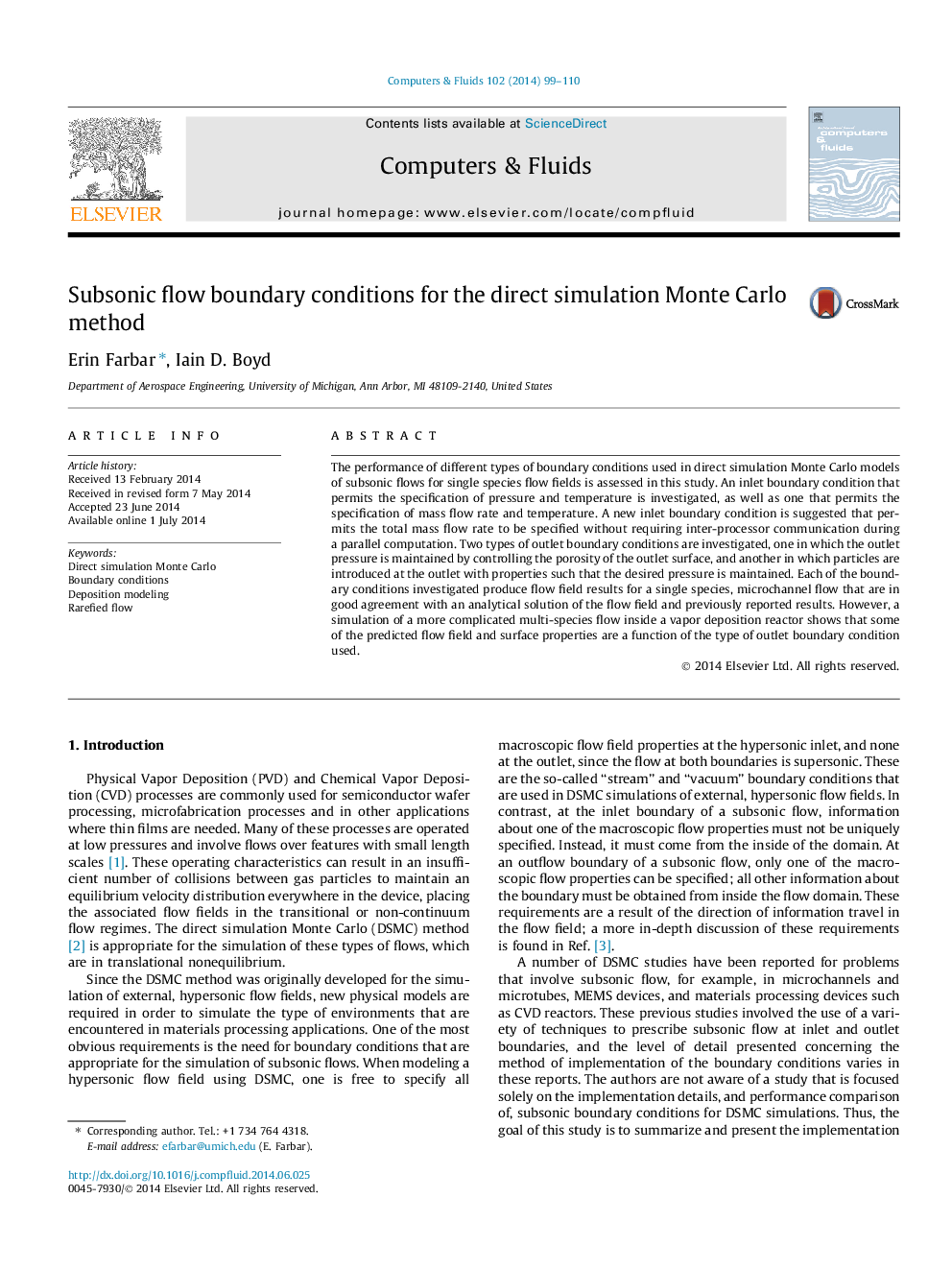| کد مقاله | کد نشریه | سال انتشار | مقاله انگلیسی | نسخه تمام متن |
|---|---|---|---|---|
| 7157126 | 1462708 | 2014 | 12 صفحه PDF | دانلود رایگان |
عنوان انگلیسی مقاله ISI
Subsonic flow boundary conditions for the direct simulation Monte Carlo method
ترجمه فارسی عنوان
شرایط مرزی جریان وابسته برای روش مستقیم مونت کارلو شبیه سازی
دانلود مقاله + سفارش ترجمه
دانلود مقاله ISI انگلیسی
رایگان برای ایرانیان
کلمات کلیدی
شبیه سازی مستقیم مونت کارلو، شرایط مرزی، مدل سازی رسوب، جریان نادرست
ترجمه چکیده
کارایی انواع مختلف شرایط مرزی مورد استفاده در شبیه سازی مستقیم مدل های مونت کارلو از جریان های زیرسوختی برای میدان های تک جریان گونه در این مطالعه مورد بررسی قرار گرفته است. شرایط مرزی ورودی که مشخصات فشار و دمای را اجازه می دهد بررسی می شود و همچنین یکی از آن ها امکان تعیین سرعت جریان جرمی و دما را دارد. یک مرز ورودی جدید پیشنهاد شده است که اجازه می دهد سرعت جریان جرم کل بدون نیاز به ارتباط بین پردازنده در طول یک محاسبات موازی تعیین شود. دو نوع شرایط مرزی خروجی مورد بررسی قرار گرفته است: یکی که فشار خروجی از طریق کنترل تخلخل سطح خروجی حفظ می شود، و دیگری که در آن ذرات در خروجی با خواص به طوری که فشار مورد نظر حفظ می شود، حفظ می شود. هر یک از شرایط مرزی مورد بررسی تولید نتایج جریان میدان برای یک گونه، جریان میکرو کانال است که در توافق خوب با یک راه حل تحلیلی از میدان جریان و نتایج قبلا گزارش شده است. با این وجود، شبیه سازی یک جریان پیچیده تر چند گونه در داخل یک راکتور رسوبدهی بخار، نشان می دهد که برخی از میدان جریان پیش بینی شده و خواص سطحی، از نوع شرایط مرزی خروجی استفاده می شود.
موضوعات مرتبط
مهندسی و علوم پایه
سایر رشته های مهندسی
مکانیک محاسباتی
چکیده انگلیسی
The performance of different types of boundary conditions used in direct simulation Monte Carlo models of subsonic flows for single species flow fields is assessed in this study. An inlet boundary condition that permits the specification of pressure and temperature is investigated, as well as one that permits the specification of mass flow rate and temperature. A new inlet boundary condition is suggested that permits the total mass flow rate to be specified without requiring inter-processor communication during a parallel computation. Two types of outlet boundary conditions are investigated, one in which the outlet pressure is maintained by controlling the porosity of the outlet surface, and another in which particles are introduced at the outlet with properties such that the desired pressure is maintained. Each of the boundary conditions investigated produce flow field results for a single species, microchannel flow that are in good agreement with an analytical solution of the flow field and previously reported results. However, a simulation of a more complicated multi-species flow inside a vapor deposition reactor shows that some of the predicted flow field and surface properties are a function of the type of outlet boundary condition used.
ناشر
Database: Elsevier - ScienceDirect (ساینس دایرکت)
Journal: Computers & Fluids - Volume 102, 10 October 2014, Pages 99-110
Journal: Computers & Fluids - Volume 102, 10 October 2014, Pages 99-110
نویسندگان
Erin Farbar, Iain D. Boyd,
